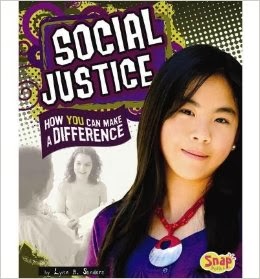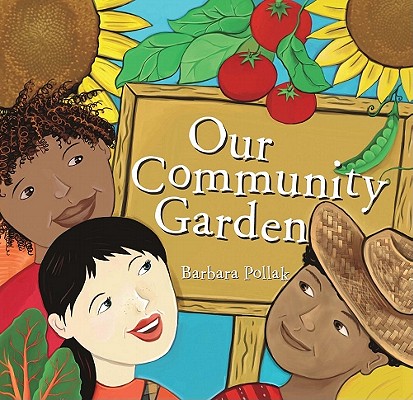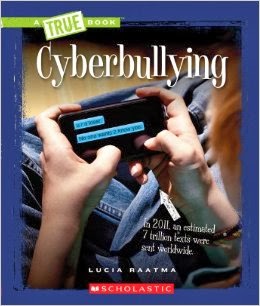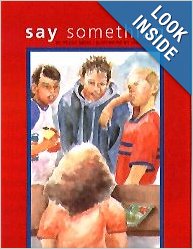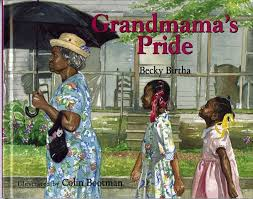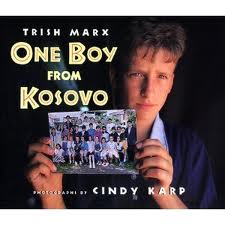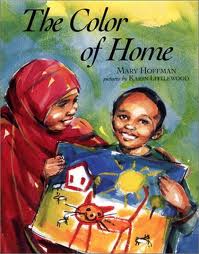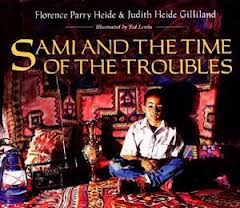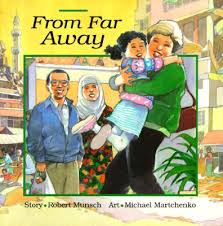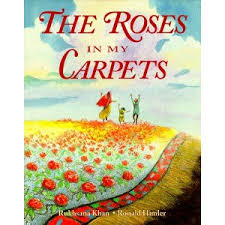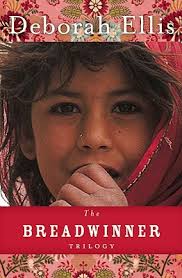Social Justice: How You Can Make a Difference by Lynn SandersThis book is about the steps in which to take before taking action. The five chapters are titled: Free to Make a Difference, Getting Started, Learn All About It, Planning, and Take Action. Throughout the book it gives you pointers and ideas on what to do to further your knowledge of your cause you want help with. The book also, has certain pages called Action Spotlight that gives you a brief story of kids who have taking action to their cause to make a difference in the world.
|
Our Community Garden by Barbara PollakIf you could plant a garden that would represent your personality and heritage, what would it include? Maybe cherry tomatoes, green peppers and delicious blueberries? Audrey Aubergine and her neighbourhood friends do just that in a community garden as they play hide-and-seek amidst giant sunflowers, count ladybugs and make compost mazes. Readers will enjoy following the garden's progress and will be inspired to start one of their own. Author and illustrator Barbara Pollak's colourful illustrations highlight the children's daily adventures in the garden. At the end of the story, the children and their families gather for a potluck to celebrate their garden and enjoy the fruits of their labour.
|
Cyberbullying by Lucia RaatmaThe book Cyberbullying is a resource children can use to learn about and overcome online bullying. It has four chapters. The first chapter describes cyber bullying, explains where on the internet it can happen, how it happens, and what it looks like. The second chapter explains the seriousness of cyber bullying and the negative effects it has on a persons well being. The third chapter explains what to do when being bullied online, who to go to for help, and explains ways you can support your friends who are being cyber bullied. The fourth and final chapter explains multiple ways you can prevent cyber bullying from happening. In addition, the book has real life stories of cyber bullying, statistics on cyber bullying, and gives other resources on bullying.
|
Say Something by Peggy MossAt this school, some children push and tease and bully. Sometimes they hurt other kids by just ignoring them. The girl in this story sees it happening, but she would never do these mean things herself. Then one day something happens that shows her that being a silent bystander isn't enough. Will she take some steps on her own to help another kid?
Bright, fluid, realistic watercolors illustrate the story, set in a school with lots of diversity. Resources at the end of the book will help parents and children talk about teasing and bullying and find ways to stop it at school. One child at a time can help change a school. |
Planting Seeds: Practicing Mindfulness with Children by Thich Nhat HanhPlanting Seeds: Practicing Mindfulness with Children is the fruit of decades of development and innovation in the Plum Village community's collective practice with children. Based on Thich Nhat Hanh's thirty years of teaching mindfulness and compassion to parents, teachers, and children, the book and enclosed CD covers a wide range of contemplative and fun activities parents and educators can do with their children or students. They are designed to help relieve stress, increase concentration, nourish gratitude and confidence, deal with difficult emotions, touch our interconnection with nature, and improve communication.
Planting Seeds offers insight, concrete activities, and curricula that parents and educators can apply in school settings, in their local communities or at home, in a way that is meaningful and inviting to children. The key practices presented include mindful breathing and walking, inviting the bell, pebble meditation, the Two Promises or ethical guidelines for children, children's versions of Touching the Earth and Deep Relaxation, eating meditation and dealing with conflict and strong emotions. Also included are the lyrics to the songs on the enclosed CD that summarize and reinforce the key teachings, as well as a chapter on dealing effectively with conflict in the classroom or difficult group. |
Grandmama's Pride by Becky BirthaGrandmama's Pride is a fictional story that takes place in the south during the 1950s. Sarah and her little sister lived in the north with their family. One summer the girls and their mother travel to grandmama's home in the south. It didn't seem odd that they had to sit in the back of the bus. Sarah and her sister did not question why they could not eat at the lunch counter. They did not think much about the local bus station that only offered seats to whites. Mom always found a polite way of explaining away these restrictions.The girls begin to notice some peculiar habits about their grandmother. She walked everywhere instead of taking the bus.She also refused to drink at the public water fountain. Once Sarah learned how to read, she realized the many signs of segregation posted throughout town. This form of discrimination clearly marked services available for whites and colored.Sarah and her family eventually return home, continuing to read about the civil rights protest taking place in Montgomery Alabama.
The following summer, the ride down south was surprisingly different. The girls did not encounter restrictions of public services for blacks. Once they arrived,Grandma excitedly explained that black citizens proudly held their ground to get segregation laws changed. Sarah realized Grandma was demonstrating pride all along by boycotting the double standard of services. The steadfast efforts for social change had made a difference. |
One Boy from Kosovo by Trish MarxWhen war drove twelve-year-old Edi and his family from their home in Kosovo, they fled across the Macedonian border to the Brazda refugee camp, a tent city that housed almost thirty thousand people. There the family shared a tent with more than twenty other people, with no kitchen, no running water, and no school for Edi to attend. Instead he helped out with the younger kids, played soccer with the other boys, and ran errands, such as waiting in the long lines for food and fresh water. Everybody was waiting in Brazda -- for news about relatives, for the war to end, for the day when they could finally go home again.
|
Nobel's Women of Peace by Michelle Benjamin and Maggie MooneyAmong the women celebrated in this book are Baroness Bertha von Suttner, one of the first activists in the modern peace movement, Betty Williams and Mairead Corrigan, who worked in the 1970s to bring peace to Northern Ireland, and Mother Teresa, who was awarded the Nobel Peace Prize in 1979. The most recent winner was Wangari Maathai, who won in 2004 for her struggle for democracy, human rights and environmental conservation in Africa. All the women included are inspiring heroines for peace.
Maggie Mooney is a therapist, editor and writer. Michelle Benjamin has worked in the book industry for many years as a publisher, editor, teacher and writer. They live in Vancouver, British Columbia, but wrote this book while volunteering with their sixteen-year-old daughter in a small town in Peru. |
How Full is your Bucket for Kids by Tom RathOrganized around a simple metaphor of a dipper and a bucket, How Full Is Your Bucket? shows how even the briefest interactions every day profoundly affect people's relationships, productivity, health, and longevity. Coauthor Donald O. Clifton, hailed as the grandfather of positive psychology, spent half a century studying the effects of emotions, interviewing people around the world. His discoveries are at the heart of How Full Is Your Bucket? Written in an engaging, conversational style, the book includes colorful stories, five strategies for improving personal emotions, and an online test that measures readers' emotional change. How Full Is Your Bucket? is a quick, breezy book that helps readers boost the amount of positive emotions in their lives, and in the lives of those around them.
|
The Color of Home by Mary HoffmanThis remarkably moving picture book follows first-grader Hassan through his first few days at school. Hassan has only recently arrived in the United States after he and his family were forced to flee Somalia, and he deeply misses the colorful landscape of his former home in Africa. But with the help of his parents, an understanding teacher, and a school art project, Hassan finds that by painting a picture of his old home and sharing his story, his homesickness and the trauma of leaving a war-torn country are lessened. And he finds that there are many things to like about his new home in America. The colorful, impressionistic illustrations are a perfect complement to the wonderful text by Mary Hoffman, author of the highly acclaimed Amazing Grace. Together art and text make this poignant story accessible and affecting for a young audience.
|
Sami and the Time of Troubles by Florence Parry Heide and Gilliland Judith HeideTen-year-old Sami lives with his family in Beirut, the capital of Lebanon. While Beirut used to be one of the most splendid cities in the world, it is now a place of trouble and ruin. Sami, his mom, and his sister live with their uncle and grandpa in the basement of their uncle’s house. Through the hard times they tell stories of how it used to be. Sometimes it is quiet and they can go outside to play.
|
From Far Away by Robert Munch and Saoussan AskarBased on a true story, Saoussan and her family flee a war-torn Lebanon, where bombs and gunshots were part of a daily life. Now safe in her new country, Saoussan starts school. But not knowing any English made the simplest things difficult: to go to the washroom, Saoussan would crawl to the door when the teacher’s head was turned and wait until someone opened it. Saoussan must adapt to a new culture in a much safer world
|
The Roses in my Carpets by Rukhsana KhanFor a young refugee living with loss and terror-filled memories, time is measured by the next bucket of water, the next portion of bread, and the next call to prayer. Here, where everything – walls, floor, courtyard – is mud, a boy’s heart can still long for freedom, independence, and safety. And here, where life is terribly fragile, the strength to endure grows out of need. But the strength to dream comes from within.
|
The Breadwinner Trilogy by Deborah EllisDeborah Ellis’ trilogy has been a phenomenal success, both critically and commercially. Now young readers can experience this entire epic story in one volume. The Breadwinner is set in Afghanistan, where 11-year-old Parvana lives with her family in a bombed-out apartment building in Kabul. When her father is arrested for the crime of having a foreign education, the family is left with no money or resources. Forbidden to earn money as a girl, Parvana must transform herself into a boy and become the breadwinner. In Parvana's Journey, her father has died and the family has scattered. Parvana, now 13 years old, is determined to find them. Again masquerading as a boy, she joins a group of wandering children, all refugees from war, who exist mainly on courage. In Mud City, the focus shifts to 14-year-old Shauzia, who lives in the Widows' Compound in Pakistan and dreams of escaping to a new life in France. Deborah Ellis uses simple, compelling language, memorable characters, and a wealth of imaginative detail in this wrenching look at the human cost of war that is also a surprisingly hopeful story of survival.
|

